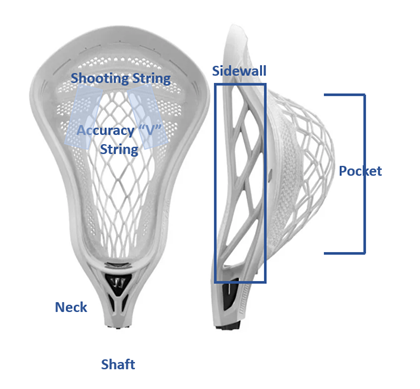Health, Lacrosse
Welcome and thanks for visiting...

What Is Lacrosse?

The only truly American sport is Lacrosse.
Even James Naismith’s hooped basketball can be traced to Mayan civilizations. Abner Doubleday’s baseball has many cricket roots and Walter Camp’s football is a blend of soccer and rugby, games born in the old world.
Native Americans were playing stickball—later named La Crosse—long before the first recorded writing on the subject shortly after pilgrims enjoyed their first harvest.
La Crosse, the French translation of “the stick” was the name Jesuit missionary Jean de Brebeuf gave stickball as he watched Chief Taratouan’s Wendat athletes compete in 1636 on their St Lawrence River valley lands.
There’s evidence indigenous stickball was played hundreds of years prior.
Considered a niche game by mainstream sports standards, Lacrosse has rocketed into popularity in recent years.
In 2020, U.S Lacrosse reported that lacrosse is the fastest-growing sport among the youth demographic. The rapid growth of lacrosse has been attributed to multiple factors including the proliferation of school sports teams and club and professional leagues.
In 2018, an NCAA study showed women's lacrosse teams nearly doubled from 256 in 2003 to 505, and men's teams grew 61% to 380 during the same period.
With the rapid growth of lacrosse in the United States, the sport has also reached a new height internationally. On July 20, 2021, The International Olympic Committee (IOC) voted to grant full recognition to the international federation for lacrosse, now known as World Lacrosse
The business of Lacrosse is growing, too as the AtheloGroup quoted a Neilson Sports study saying: “In 2020 brands partnering with MLL have, “a deep connection to fans, showing that 75% of Lacrosse fans have a higher tendency to buy products from MLL sponsors.
What has breathed new energy into America’s truly original game and how is it played?
The why is Lacrosse so popular part of that question is answered in an assessment by Army & Navy Academy, the gist of which says
- Because anyone can play despite their physical framework
- Lacrosse is fun to watch
- Lacrosse players are now TV stars
- Lacrosse is safer than most contact sports, appealing to parents, too.
- There are abundant opportunities to play Lacrosse at a club, high school, college, and professional level.
While Why Lacrosse is pretty clear, the How part of the Lacrosse question can be a bit opaque and depends on a mix of who you are and what league you're playing or watching.
There are separate sets of rules, equipment, and even fields of play for youth, high school, collegiate, men, women, mixed, wheelchair and pro Lacrosse competitions.
Two complementary governing bodies—World Lacrosse and US Lacrosse-- have richly detailed descriptions and depictions of all iterations of the sport.
A popular thumbnail: Lacrosse is a men’s and women’s team sport where players use netted sticks to carry, pass, and shoot the ball to score goals. The victor is decided by whichever team puts the ball inside the opposing goal the most.

The major difference between men’s and women’s Lacrosse is body contact—a rule infraction in the women’s game. Equipment is different too, emphasizing more protective wear in the men’s sport.

There's a mini version too, called Box Lacrosse, mostly played indoors on smaller play areas. Another version called Sixes reduces the size of active players, making for a wide-open faster game.
An informal view of the rules as they apply to men’s play.
- 10 players per team. Four stay on the defensive half of the field. Three on offense and three can travel to both areas.
- A typical game is four 12 minute quarters, though some leagues are longer and others shorter.
- The game begins with a faceoff—much like ice hockey.

- Only the goalies can touch the ball with their hands.
- All players must use the stick to carry, catch, shoot or pass the ball.
- When a player is within 5 yards of the ball or possesses it, a body check is permitted. A body check is contact from the front between the waist and shoulders.
- A stick check—contact with stick or gloves is permitted.
- Out of bounds is loss of possession determined by the player closest to the ball when it goes beyond the field of play boundaries.
- A designated area around the goal is called the crease. An opposing player is not allowed to enter the crease, though they can reach in with their stick to pick up the ball.

Courtesy Author Robert Merkel
The passion and deep-rooted respect for the sport's heritage are epitomized in this excerpt from US Lacrosse Magazine’s Faces and Voices of the Native American Lacrosse Community section where stick maker Ron Patterson speaks of introducing his son to the game:
“From a young age, you’re given a lacrosse stick and you carry it around all the time. When my son was born, I gave him a cradle stick. When he was old enough to run around outside, I gave him a real wooden stick. When he gets older and he gets his own stick, he’ll learn the pride and the history and the background and the culture of what it means to be a Haudenosaunee. It’s an honorable thing to receive a stick from someone "You don’t just leave the stick laying around. It’s a sacred instrument of a game that we still play today."
For readers who've come this far, your interest is showing, so here is a glossary digest that might be helpful as Lacrosse in your life becomes more important.
- Attack Area is the zone on the playing field where the opponent's goal exists.
- Attacker is the team or player on the offense
- Clearing is when the defense gains possession of the ball and tries to move it to their teammates in the attack area.
- The Crease circles an area around the goal. Only the goalies and defensive players can enter the crease and only the goalie can handle the ball there.
- Cross Checking is when an opponent has the ball or is within five yards of the ball, a player can body-check them. A body check must make contact from the front of the player and between the waist and the shoulders. There is also a stick check where a player may hit an opponent on the stick or gloves to knock the ball away or to keep a player from getting the ball
- Crosse is a name for the stick.
- Defender is one of four defensive players who must stay on defensive side of the field.
- Defensive Area is the side of the field where your team’s goal exists.
- Face-off is how play begins with a ball placed on the ground between two opposing players with the start signaled by referee whistle.
- Goal is a 6’ x 6’ net
- Goal Keeper is also known as the goalie is the only player allowed to touch the ball with their hands
- Fast Break is when the offense moves so quickly they have a player advantage at the offensive end
- Man-up/Man-Down is when a player commits a foul and may receive penalty time, reducing their team's allowed number of players. Also known as a power play.
- Midfielder is a Lacrosse player allowed to play on the full field.
- Offside is a penalty when one team has more than 6 players on half of the field.
- Ride is an offensive tactic to try and stop the defense from clearing the ball.
- Settled is when all players are in proper positions.
- Slashing is using a Lacrosse stick to hit another player on an area other than their stick or gloves.
- Transition is moving the ball from the defensive side of the field to the offensive side
- Unsettled is when some players are out of position, giving an advantage to the offense.
- Wing Area is a territory in the middle of the field between attack and defensive zones.
- X is the area behind the goal.
To wrap a ribbon around the surging popularity of Lacrosse, the words of Hall of Fame coach and player, Chris Hall are apt:
“Lacrosse seems to be a sport of the future. Maybe it’s even become the sport of the now.”
Somewhere the spirit of Chief Taratouan is smirking.





